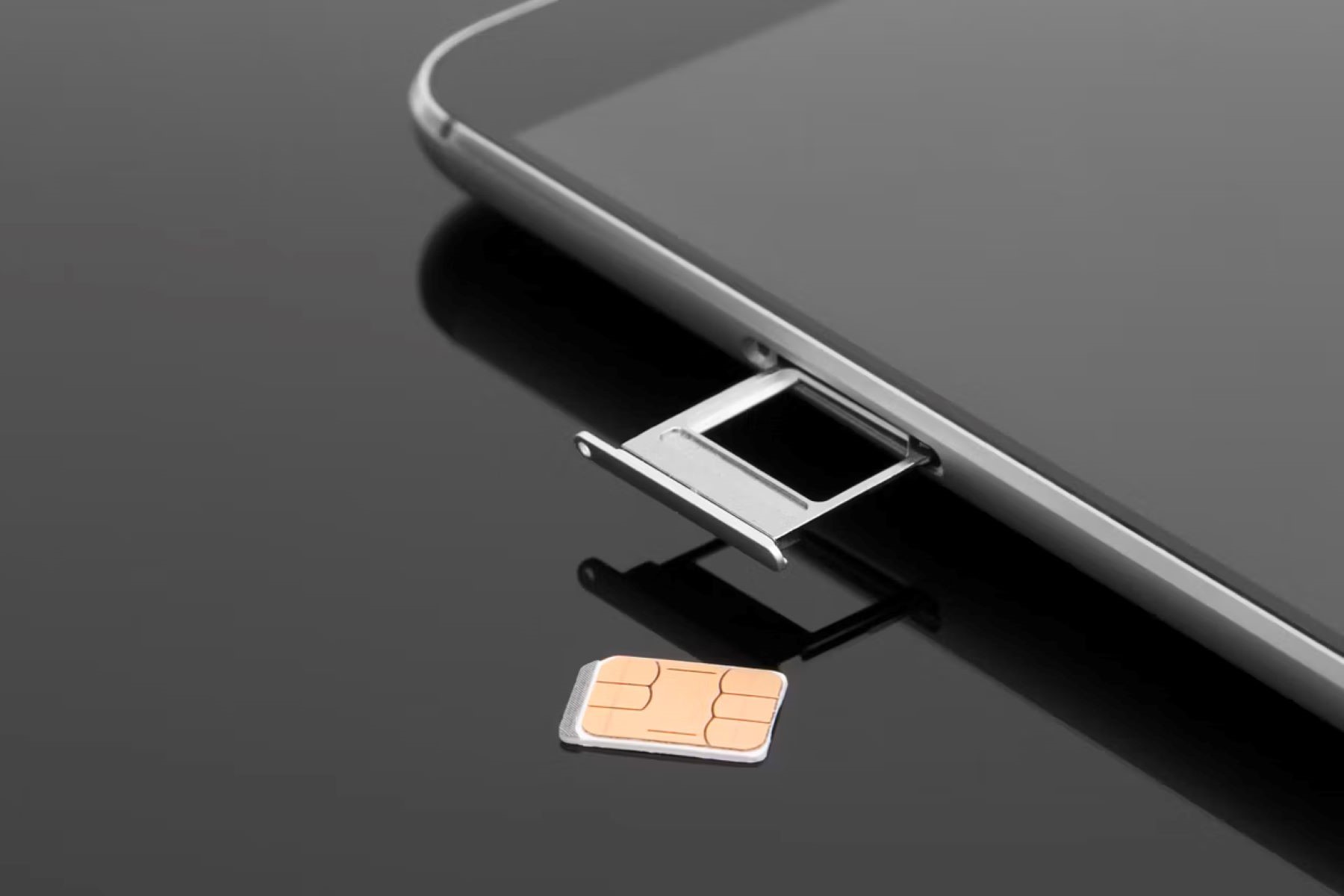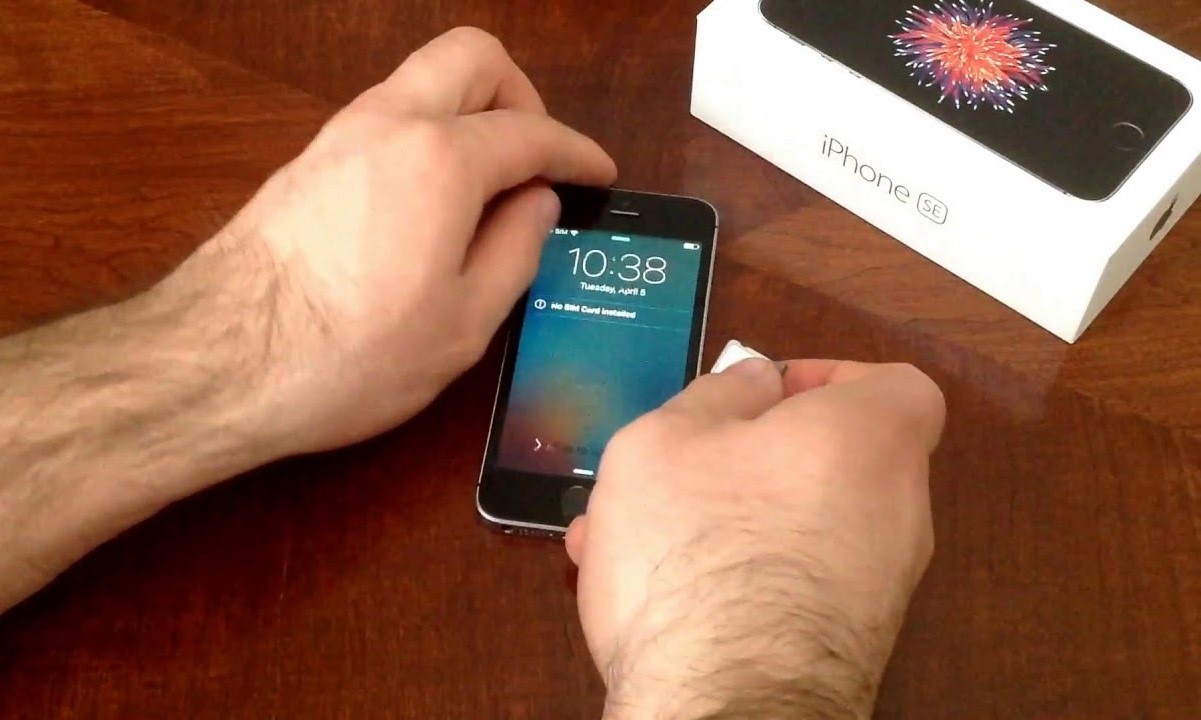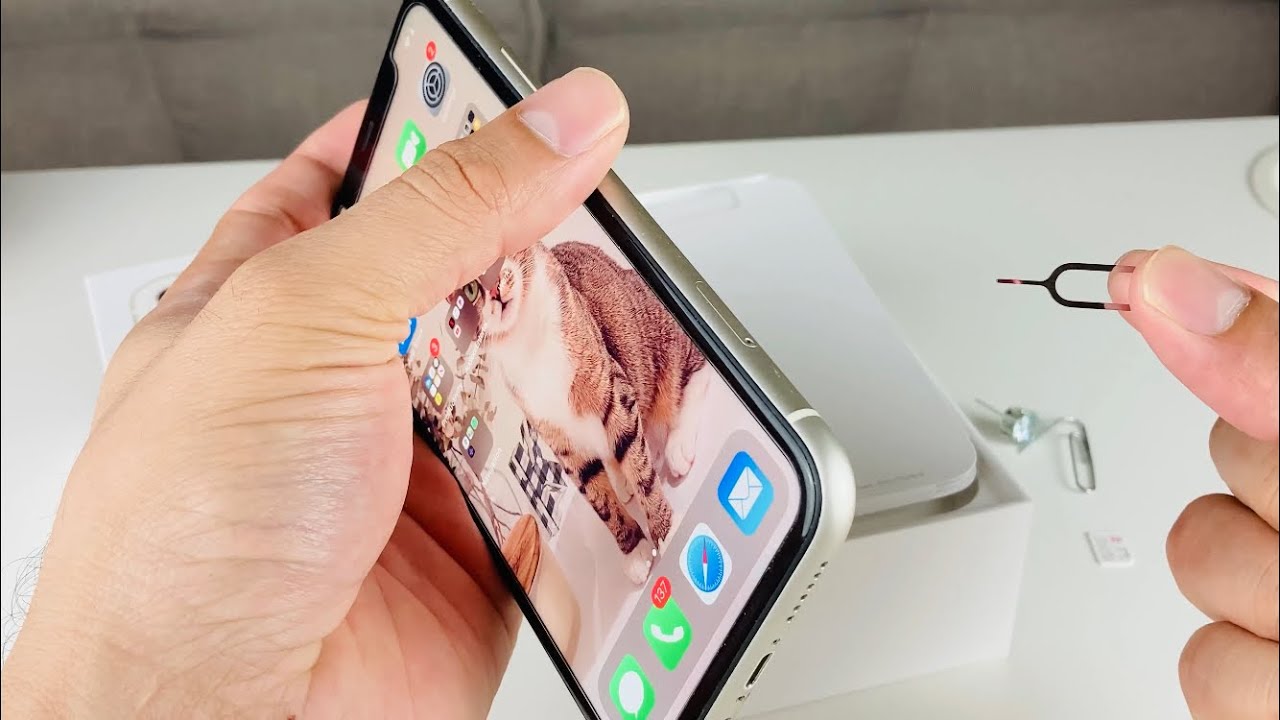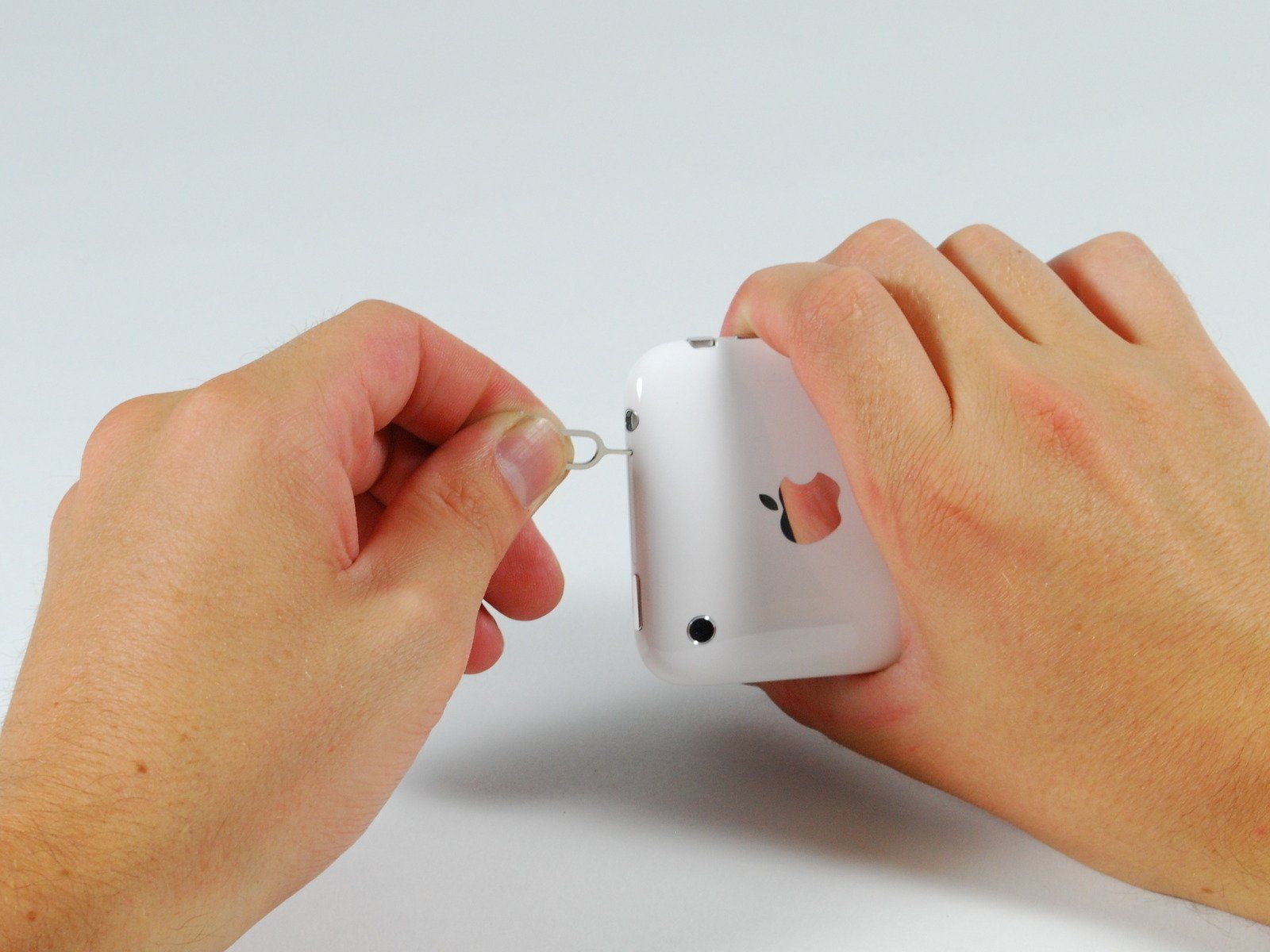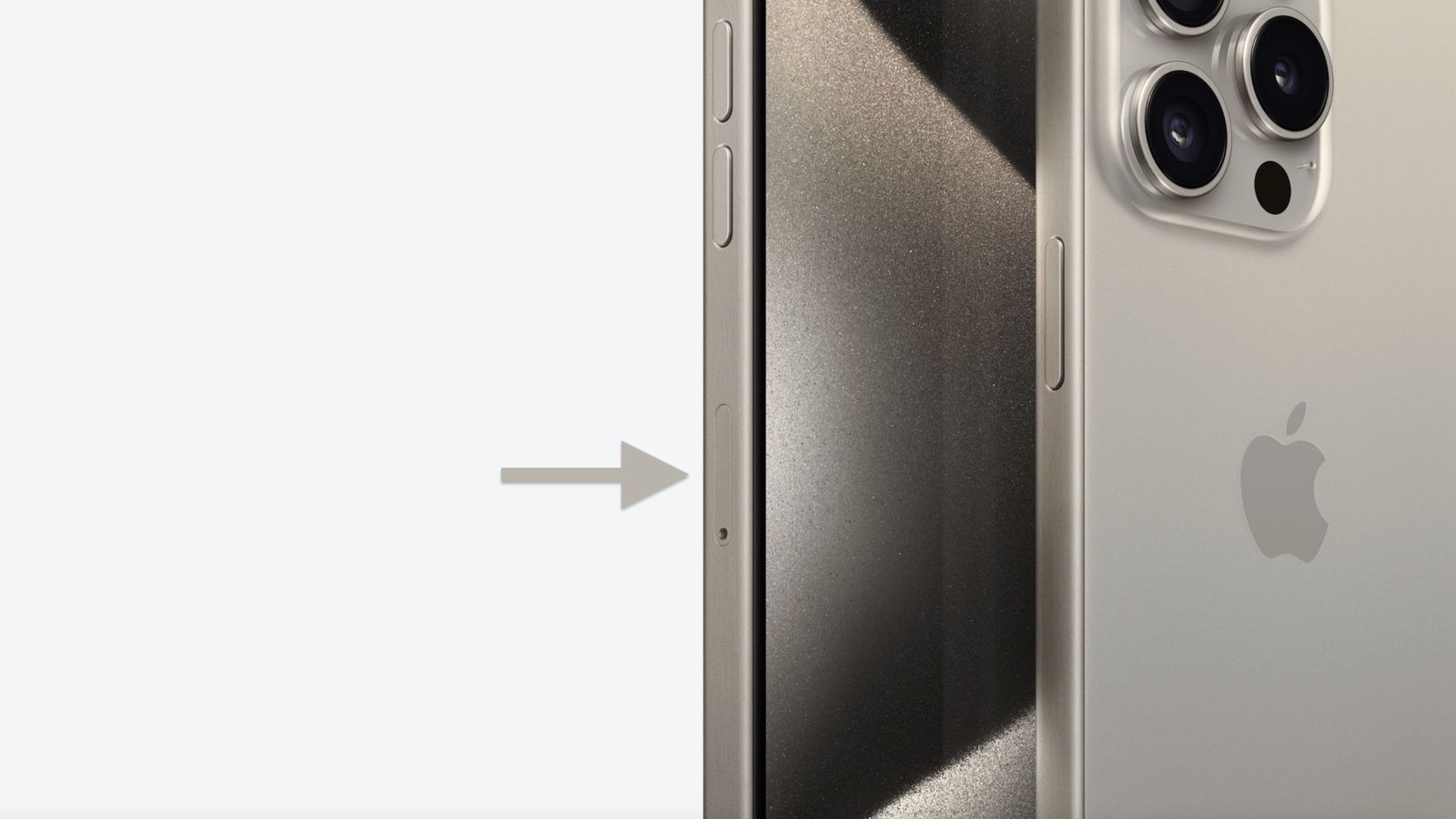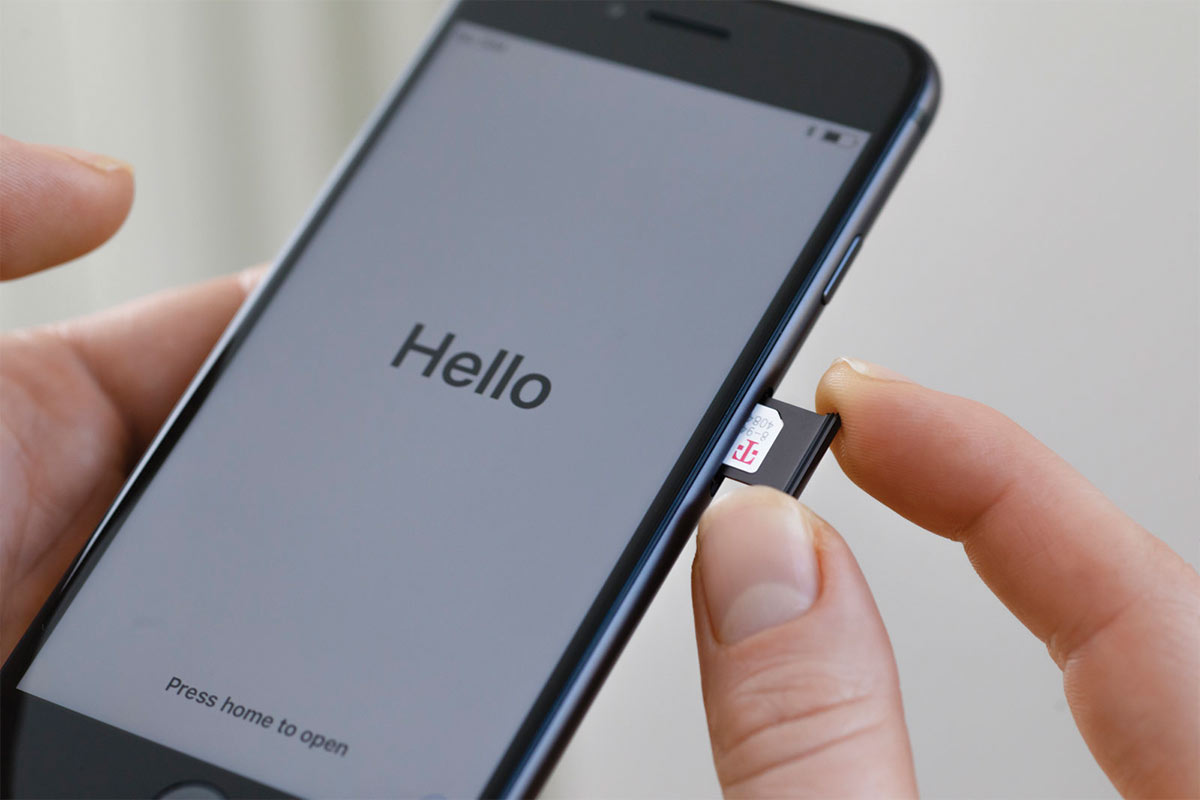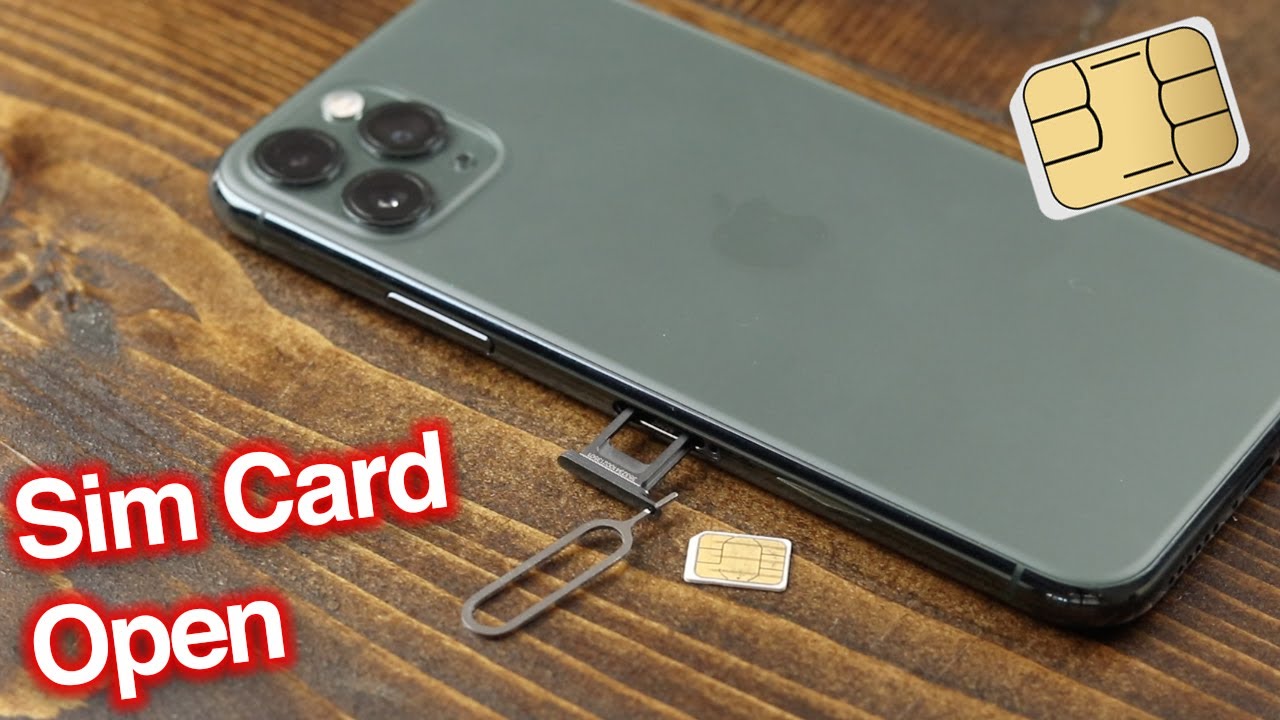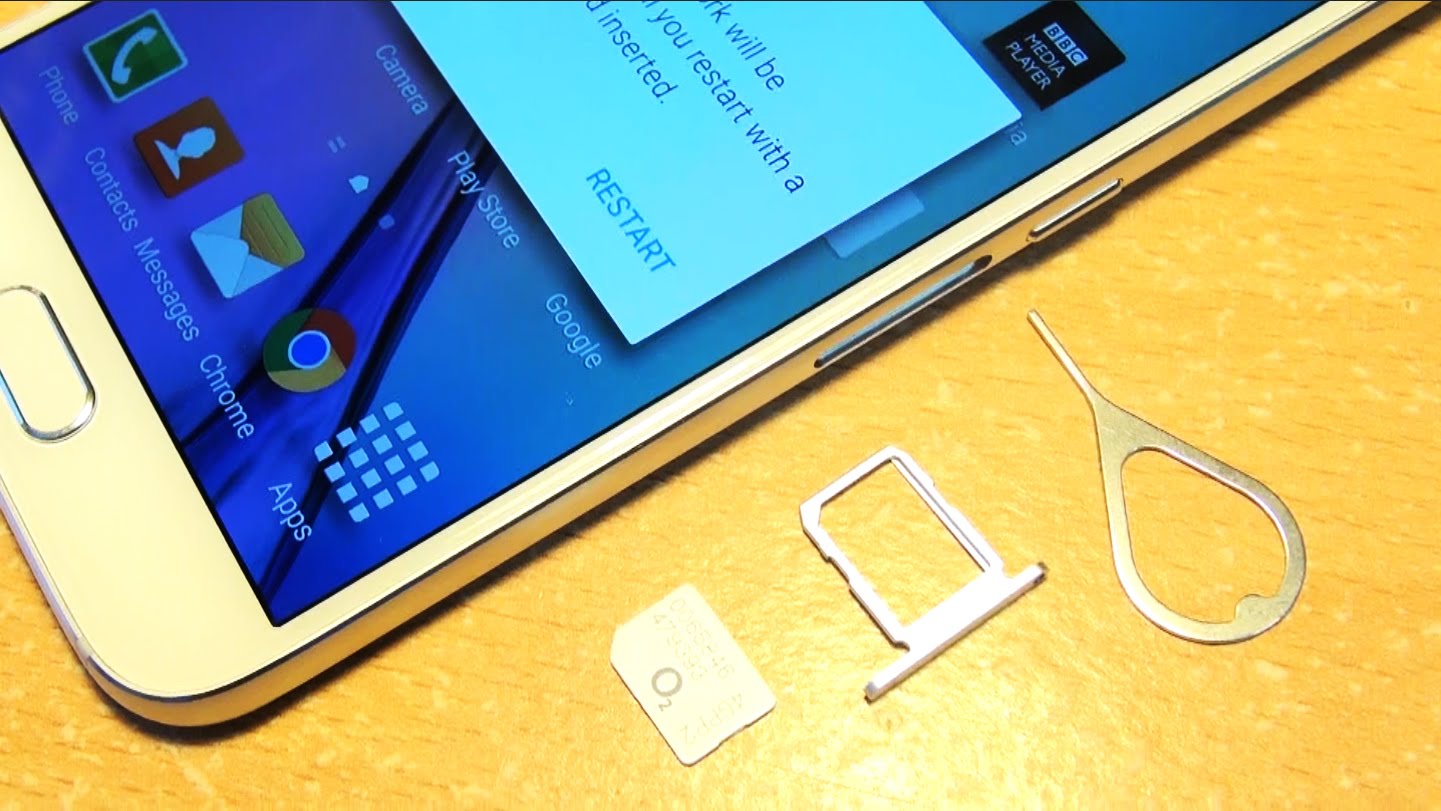Introduction
Setting up a phone without a SIM card has become a common scenario in today's digital landscape. Whether you've lost your SIM card, are traveling abroad, or simply want to test a new device, the ability to initialize a phone without a physical SIM card is essential. Understanding the various methods and implications of setting up a phone without a SIM card is crucial for anyone navigating the mobile device ecosystem.
In this comprehensive guide, we will delve into the significance of a SIM card, explore the methods for setting up a phone without one, and provide insights into the evolving landscape of mobile device activation. By the end of this guide, you will have a clear understanding of the options available for initializing a phone without a physical SIM card and be equipped with the knowledge to make informed decisions in various scenarios.
The process of setting up a phone without a SIM card involves leveraging alternative connectivity options and innovative technologies. As the mobile industry continues to evolve, the traditional reliance on physical SIM cards is being complemented by virtual SIM solutions and advanced connectivity methods. This guide aims to demystify these options and empower users to seamlessly set up their devices without the constraints of a physical SIM card.
As we embark on this exploration, it's important to acknowledge the dynamic nature of mobile technology. The methods and tools for setting up a phone without a SIM card are continually evolving, driven by advancements in connectivity, virtualization, and user convenience. By staying informed about these developments, users can adapt to the changing landscape and harness the full potential of their mobile devices.
With a clear understanding of the importance of a SIM card and the various methods for setting up a phone without one, you will be well-prepared to navigate the intricacies of mobile device activation. Let's embark on this journey to uncover the diverse approaches and innovations that enable seamless phone setup without a physical SIM card.
Understanding the Importance of a SIM Card
A Subscriber Identity Module (SIM) card is a small, removable card that is essential for the functioning of a mobile device. It serves as the unique identifier for a subscriber within a mobile network, enabling communication services such as voice calls, text messaging, and data connectivity. The SIM card contains crucial information, including the subscriber's identity, network authentication key, and personal data, making it a fundamental component in the realm of mobile communication.
One of the primary functions of a SIM card is to authenticate the subscriber's identity to the mobile network. This authentication process is vital for ensuring secure and authorized access to network services, safeguarding against unauthorized usage and protecting the subscriber's account information. Additionally, the SIM card stores the subscriber's phone number and facilitates the allocation of network resources, enabling seamless communication and connectivity.
Moreover, SIM cards play a pivotal role in enabling mobile device portability. By simply transferring the SIM card to a different compatible device, subscribers can retain their phone number, network identity, and subscription details, facilitating a seamless transition between devices. This portability feature empowers users to switch devices without the need to update contact information or reconfigure network settings, enhancing convenience and flexibility in the mobile ecosystem.
Furthermore, SIM cards are integral to the provisioning of mobile services, as they enable network operators to manage subscriber accounts, allocate network resources, and personalize service offerings. The unique identifier embedded in the SIM card allows network operators to tailor services and tariffs based on the subscriber's profile, ensuring a personalized and optimized user experience.
In the context of international travel, SIM cards play a crucial role in enabling roaming services and international connectivity. By inserting a local or international SIM card into a compatible device, travelers can access voice, messaging, and data services while abroad, facilitating seamless communication and connectivity across borders.
In essence, the SIM card serves as the linchpin of mobile communication, providing secure authentication, subscriber identity management, network portability, and personalized service provisioning. Its significance extends beyond basic connectivity, encompassing the realms of security, convenience, and personalized user experiences. Understanding the pivotal role of a SIM card lays the foundation for exploring alternative methods for setting up a phone without a physical SIM card, as we will delve into in the subsequent sections.
Methods for Setting Up a Phone Without a SIM Card
Setting up a phone without a physical SIM card presents a versatile array of methods that cater to different scenarios and user preferences. Whether you're activating a new device, traveling internationally, or simply exploring alternative connectivity options, these methods offer flexibility and convenience in the mobile device setup process.
Using Wi-Fi for Initial Setup
One of the primary methods for setting up a phone without a SIM card involves leveraging Wi-Fi connectivity for the initial device setup. Modern smartphones are equipped with Wi-Fi capabilities that enable users to connect to wireless networks for essential setup tasks, such as configuring device settings, signing in with a Google or Apple ID, and downloading essential updates and applications from app stores. By connecting to a Wi-Fi network during the initial setup process, users can bypass the need for a physical SIM card and proceed with configuring their devices for optimal functionality.
Using a Virtual SIM Card
Innovations in mobile technology have led to the emergence of virtual SIM solutions, which offer an alternative approach to traditional SIM card activation. Virtual SIM cards, also known as eSIMs (embedded SIMs), are integrated into the device's hardware and can be provisioned and activated remotely by network operators. This technology enables users to set up their phones without a physical SIM card by leveraging the embedded virtual SIM, which facilitates network authentication and connectivity. With the growing adoption of eSIM technology by mobile carriers worldwide, users have the option to initialize their devices using virtual SIM solutions, eliminating the need for a physical SIM card.
Using an Unlocked Phone
Another method for setting up a phone without a SIM card involves using an unlocked device. Unlocked phones are not tied to a specific carrier and can be activated and configured without a SIM card from a particular network operator. This flexibility allows users to initialize their devices using Wi-Fi connectivity, sign in with their existing accounts, and access essential features and services without the constraints of a physical SIM card. Unlocked phones provide a seamless setup experience, enabling users to personalize their devices and access a wide range of applications and services without immediate reliance on a SIM card.
These methods for setting up a phone without a physical SIM card underscore the evolving landscape of mobile device activation, driven by advancements in connectivity technologies and user-centric solutions. By embracing these methods, users can navigate the setup process with flexibility and convenience, regardless of their specific requirements or circumstances. As the mobile industry continues to innovate, the options for setting up a phone without a physical SIM card are expected to expand, offering users enhanced flexibility and choice in the activation of their devices.
Using Wi-Fi for Initial Setup
When it comes to setting up a phone without a physical SIM card, leveraging Wi-Fi for the initial setup process offers a versatile and convenient approach. Modern smartphones are equipped with Wi-Fi capabilities, enabling users to connect to wireless networks for essential configuration tasks, even in the absence of a physical SIM card.
The initial setup process typically involves configuring device settings, signing in with a Google or Apple ID, and downloading essential updates and applications from app stores. By connecting to a Wi-Fi network during this phase, users can seamlessly proceed with customizing their devices for optimal functionality, bypassing the immediate need for a physical SIM card.
One of the key advantages of using Wi-Fi for the initial setup is the flexibility it offers in various scenarios. For instance, individuals who have misplaced or are awaiting a replacement SIM card can still initiate and personalize their devices using Wi-Fi connectivity. This ensures that the device is fully operational, allowing users to access essential features and services without the constraints of a physical SIM card.
Furthermore, travelers who are abroad and do not have access to a local SIM card can rely on Wi-Fi for the initial setup of their devices. This enables them to configure their devices, sign in with their accounts, and download necessary applications using wireless connectivity, ensuring that the device is ready for use even in a foreign network environment.
Moreover, the reliance on Wi-Fi for the initial setup aligns with the increasing prevalence of public and private Wi-Fi networks in various settings, such as homes, offices, cafes, and public spaces. This ubiquity of Wi-Fi connectivity empowers users to initialize their devices seamlessly, regardless of their location or immediate access to a physical SIM card.
In essence, using Wi-Fi for the initial setup of a phone without a physical SIM card exemplifies the adaptability and convenience offered by modern mobile devices. By leveraging wireless connectivity, users can navigate the setup process with ease and flexibility, ensuring that their devices are fully functional and personalized, even in the absence of a traditional SIM card.
This method not only caters to immediate setup needs but also aligns with the evolving landscape of mobile connectivity, where Wi-Fi plays a pivotal role in enabling seamless device configuration and usage. As the reliance on Wi-Fi connectivity continues to grow, the option to set up a phone without a physical SIM card using Wi-Fi is expected to remain a fundamental and user-friendly approach in the mobile device activation process.
Using a Virtual SIM Card
In the realm of mobile device activation, the emergence of virtual SIM solutions has revolutionized the traditional approach to SIM card provisioning. Virtual SIM cards, also known as eSIMs (embedded SIMs), represent a groundbreaking innovation that enables users to set up their phones without a physical SIM card, thereby reshaping the landscape of mobile connectivity.
Unlike traditional SIM cards, which are physical, removable chips, eSIMs are integrated into the device's hardware and can be remotely provisioned and activated by network operators. This transformative technology leverages the embedded virtual SIM to facilitate network authentication and connectivity, offering a seamless and flexible approach to device initialization.
The adoption of virtual SIM solutions has unlocked a myriad of benefits for users seeking to set up their phones without a physical SIM card. One of the key advantages lies in the convenience and versatility offered by eSIM technology. Users can activate their devices using virtual SIMs, eliminating the need for a physical SIM card and streamlining the setup process. This is particularly beneficial for individuals who may not have immediate access to a physical SIM card or are exploring alternative connectivity options.
Furthermore, the integration of eSIM technology aligns with the evolving trend of device miniaturization and space optimization. By eliminating the need for a physical SIM card slot, devices can be designed with sleeker profiles and enhanced durability, catering to the preferences of modern users who prioritize portability and aesthetics.
The impact of virtual SIM technology extends beyond the realm of consumer devices, permeating into the domains of enterprise mobility and IoT (Internet of Things). Organizations and businesses can leverage eSIM solutions to efficiently manage and provision connectivity for a multitude of devices, ranging from smartphones and tablets to IoT sensors and wearable gadgets. This scalability and flexibility offered by virtual SIMs empower enterprises to streamline device activation and connectivity management, driving operational efficiency and cost optimization.
Moreover, the global adoption of eSIM technology by mobile carriers and device manufacturers signifies a paradigm shift in the mobile industry. As the ecosystem continues to embrace virtual SIM solutions, users can expect an expanding array of devices and connectivity options that leverage the benefits of eSIM technology, offering enhanced flexibility and choice in the activation of their devices.
In essence, the utilization of virtual SIM cards represents a pivotal advancement in the realm of mobile connectivity, empowering users to set up their phones without a physical SIM card and embracing the era of virtualized, seamless device activation. As the adoption of eSIM technology continues to proliferate, users can anticipate a future where virtual SIM solutions redefine the paradigms of mobile connectivity, offering unprecedented convenience and flexibility in the setup and usage of their devices.
Using an Unlocked Phone
When it comes to setting up a phone without a physical SIM card, using an unlocked device offers a seamless and versatile approach. An unlocked phone refers to a device that is not tied to a specific carrier or network operator, allowing users to activate and configure it without the immediate need for a physical SIM card. This flexibility empowers users to personalize their devices, access essential features and services, and leverage alternative connectivity options, all without the constraints of a traditional SIM card.
One of the key advantages of using an unlocked phone for device setup is the freedom it offers in various scenarios. Users can initiate the setup process using Wi-Fi connectivity, sign in with their existing accounts, and access essential features and services without the immediate reliance on a physical SIM card. This is particularly beneficial for individuals who may be transitioning between carriers, awaiting a replacement SIM card, or simply exploring alternative connectivity options.
Moreover, the use of unlocked phones aligns with the growing trend of device portability and cross-carrier compatibility. By leveraging an unlocked device, users can seamlessly transition between different network operators without the need to acquire a new device or undergo complex activation processes. This flexibility empowers users to retain their devices while adapting to changing carrier preferences or travel requirements, ensuring a seamless and personalized mobile experience.
Furthermore, the prevalence of unlocked devices underscores the evolving landscape of consumer choice and device ownership. With an unlocked phone, users have the autonomy to select their preferred network operator, customize their connectivity options, and optimize their mobile experience based on individual preferences and requirements. This user-centric approach to device activation fosters a sense of empowerment and flexibility, aligning with the diverse needs of modern mobile users.
In essence, the use of unlocked phones for setting up a device without a physical SIM card exemplifies the evolving paradigms of mobile device activation. By embracing the flexibility and freedom offered by unlocked devices, users can navigate the setup process with ease and autonomy, ensuring that their devices are fully personalized and functional without immediate reliance on a traditional SIM card. As the mobile industry continues to prioritize user choice and device flexibility, the option to set up a phone without a physical SIM card using an unlocked device is expected to remain a fundamental and user-friendly approach in the mobile device activation process.
Conclusion
In conclusion, the process of setting up a phone without a physical SIM card encompasses a diverse array of methods and innovations that cater to the evolving needs and preferences of modern mobile users. From leveraging Wi-Fi connectivity for initial setup to embracing virtual SIM solutions and unlocked devices, the options available for device activation without a traditional SIM card underscore the flexibility, convenience, and user-centric nature of contemporary mobile technology.
The significance of a SIM card as a fundamental component of mobile communication cannot be overstated. It serves as the linchpin of subscriber identity, network authentication, and personalized service provisioning, playing a pivotal role in enabling secure and seamless connectivity. Understanding the multifaceted importance of a SIM card lays the groundwork for exploring alternative methods for setting up a phone without a physical SIM card, illuminating the dynamic landscape of mobile device activation.
The utilization of Wi-Fi for initial setup exemplifies the adaptability and convenience offered by modern mobile devices. By leveraging wireless connectivity, users can navigate the setup process with ease and flexibility, ensuring that their devices are fully functional and personalized, even in the absence of a traditional SIM card. This method aligns with the increasing prevalence of public and private Wi-Fi networks, empowering users to initialize their devices seamlessly, regardless of their immediate access to a physical SIM card.
Furthermore, the emergence of virtual SIM solutions, represented by eSIM technology, has redefined the paradigms of mobile connectivity. The integration of virtual SIM cards into device hardware offers unprecedented convenience and flexibility, enabling users to set up their phones without a physical SIM card and embrace the era of virtualized, seamless device activation. As the adoption of eSIM technology continues to proliferate, users can anticipate a future where virtual SIM solutions redefine the paradigms of mobile connectivity, offering unprecedented convenience and flexibility in the setup and usage of their devices.
Additionally, the use of unlocked devices for setting up a phone without a physical SIM card underscores the evolving landscape of consumer choice and device ownership. By embracing the flexibility and freedom offered by unlocked devices, users can navigate the setup process with ease and autonomy, ensuring that their devices are fully personalized and functional without immediate reliance on a traditional SIM card.
In essence, the methods for setting up a phone without a physical SIM card reflect the dynamic nature of mobile technology and the continuous innovation driving the mobile industry forward. As the ecosystem evolves, users can expect an expanding array of devices and connectivity options that leverage the benefits of alternative setup methods, offering enhanced flexibility and choice in the activation of their devices.
By staying informed about these developments and understanding the diverse approaches and innovations that enable seamless phone setup without a physical SIM card, users can adapt to the changing landscape and harness the full potential of their mobile devices. The ability to initialize a phone without a physical SIM card is essential in today's digital landscape, and this comprehensive guide aims to empower users with the knowledge to make informed decisions in various scenarios, ensuring a seamless and personalized mobile experience.







